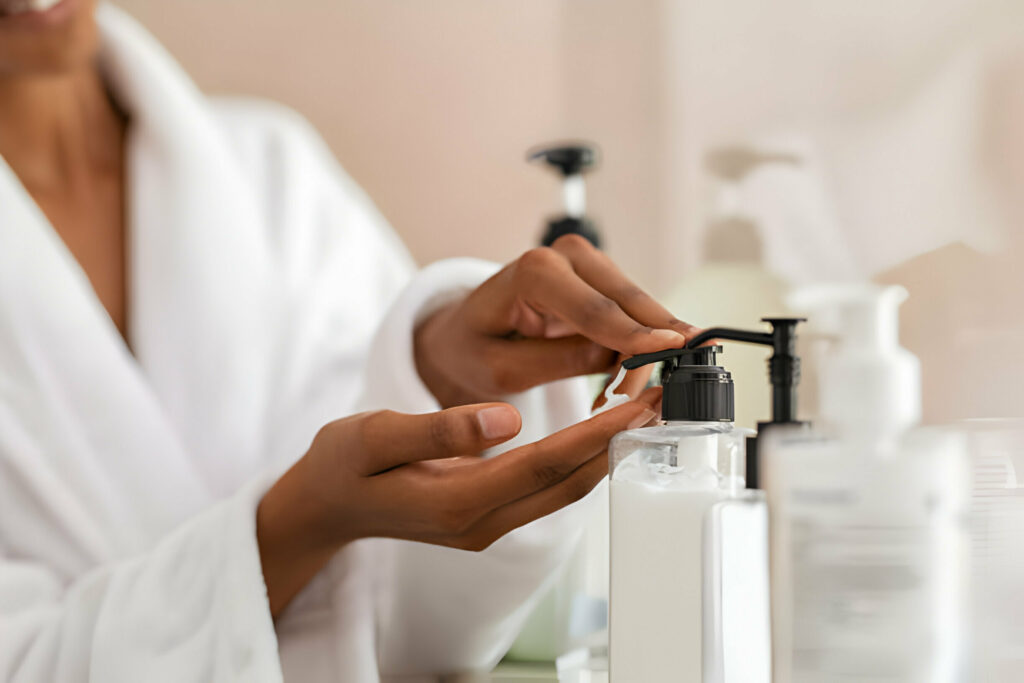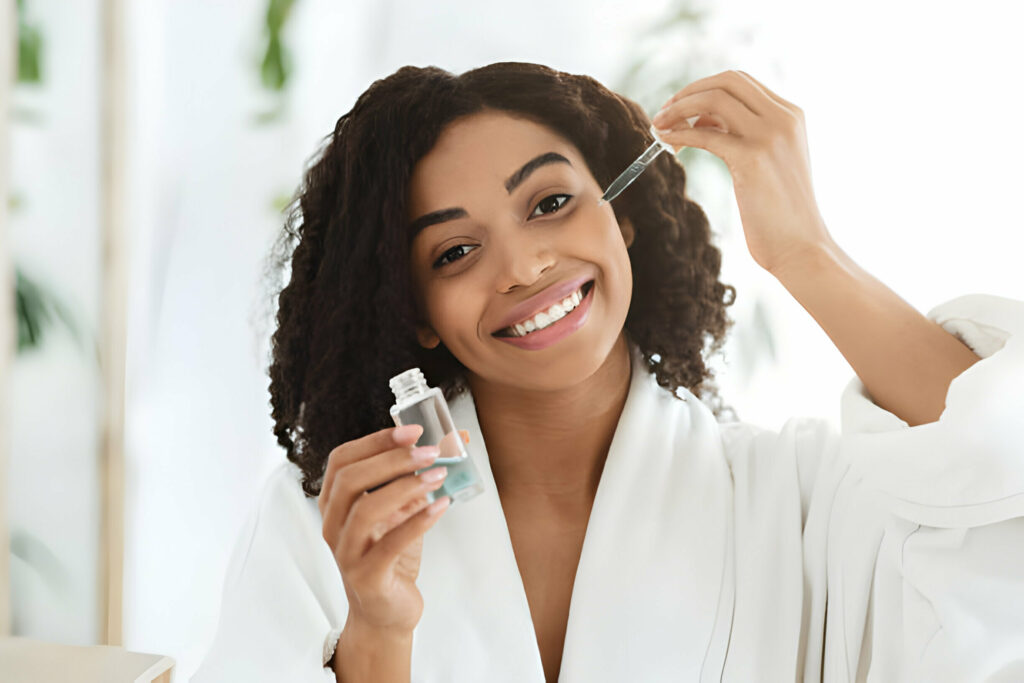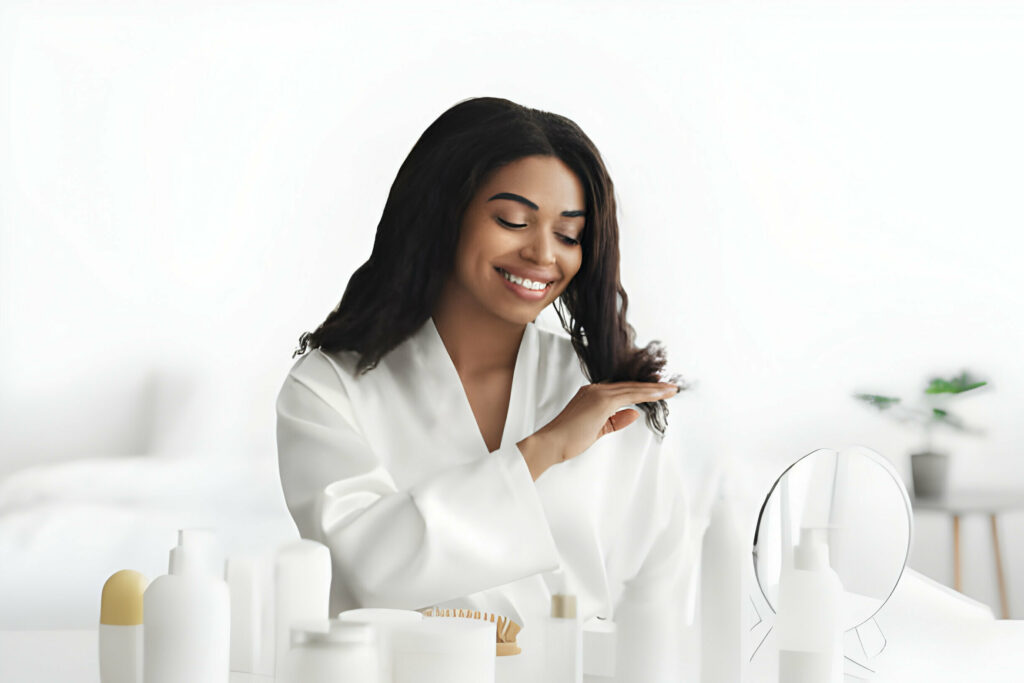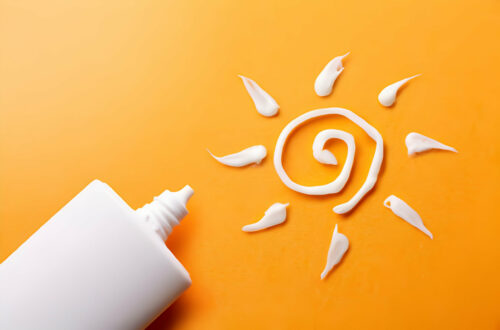Having great skin isn’t solely determined by your DNA. Your daily habits play a significant role in determining what you observe in the mirror. However, due to varying product reviews and professional opinions, there is an overwhelming amount of advice on topics ranging from moisturizing techniques to safeguarding your skin against UV rays. Understanding the correct order of skin care products can help you navigate this abundance of information. Ultimately, skin care is a personal journey. Here are key points to consider to navigate through the abundance of information.
Prep Your Skin Care Routine: Essential Guidelines
The Foundation in Three Key Phases
Visualize your skin-care regimen as a sequence of three fundamental phases:
Cleansing – Gently purifying your facial skin. Toning – Achieving equilibrium and harmony in your skin. Moisturizing – Providing vital hydration and enhancing skin suppleness.

The objective of every skin-care ritual is to fine-tune your complexion, optimize its functionality, and simultaneously tackle specific areas you wish to enhance. ‘Beauty rituals serve as moments of self-awareness,’ remarks Kristina Holey, an esteemed skin-care specialist from San Francisco. Just as your skin’s requirements evolve with age, your chosen products should adapt as well, especially in the realm of anti aging skin care. Yet, she emphasizes, ‘it’s not about pursuing flawlessness.’ Embrace these three steps as your daily ceremonial practice, reinforcing your skin and positively anchoring your day
Allow for Patience
The scientific advancements within skin-care products are noteworthy, but instantaneous solutions remain elusive—time is imperative to reap the rewards, asserts Dr. Rachel Nazarian, a Manhattan-based dermatologist affiliated with the Schweiger Dermatology Group. “Consistent usage is the key to visible results,” she elucidates. As a general guideline, commit to employing a product for a minimum of six weeks, once or twice daily, for discernible transformations to transpire.
Pro Tip: When integrating multiple skin-care products, adhere to the principle of consistency—apply them from thinnest to thickest in terms of texture. For instance, commence with a cleanser, followed by toner (if included), then serum, concluding with moisturizer.
Purification Process
According to Dr. Carlos Charles, a prominent dermatologist in New York City, cleansing your face stands as the quintessential and foundational step within any regimen. He emphasizes, “Our skin routinely encounters environmental pollutants, dirt, and various elements that necessitate delicate elimination.” It’s recommended to cleanse twice daily—once in the morning and once before bedtime—to prevent congested pores, lackluster complexion, and occurrences of acne.
Discover Your Optimal Facial Cleanser
The perfect formula will effectively cleanse your skin while preserving its essential and nourishing oils. It’s advised to exercise caution with exfoliating scrubs (utilize them once a week) and avoid products containing crushed walnut shells or harsh constituents.
Decoding the Significance of “Non-Comedogenic”
The term ‘non-comedogenic’ is a frequent inclusion on product labels and is often employed by skin-care professionals, yet it doesn’t always come with a straightforward, plain explanation. Let’s break it down: When a product asserts its non-comedogenic nature, it signifies that it’s designed not to obstruct pores or incite acne. In the realm of pregnancy safe skin care, this is achieved by avoiding actions such as skin occlusion, gland blockage, or hair follicle irritation. It’s important to note that the claim lacks regulation by the F.D.A., leaving many companies to conduct their internal assessments to determine whether their product qualifies as non-comedogenic or not. (Examples of some well-known comedogenic ingredients include coconut oil and cocoa butter.) Generally, products with fewer ingredients tend to offer greater clarity in predicting potential reactions they might cause.

The Art of Toning
Utilizing Toner Effectively
The mere mention of “toner” often conjures memories of astringents causing a stinging sensation back in the ’80s. Dr. Nazarian explains, “The original iterations were alcohol-based products aimed at drying oily skin and eliminating any remaining impurities post-cleansing.” However, contemporary formulations have transformed. Picture them as supplements—these lightweight fluids administer an extra dose of nutrients, enhancing the absorption capabilities of other products in your routine, all while maintaining the equilibrium of your complexion. According to Jordana Mattioli, a respected aesthetician in New York City, most experts consider toners to be optional: “They can serve as a means to introduce specific ingredients that might not be present in your other products or to add another layer of skin-replenishing properties.” If you have the inclination and time, here are noteworthy ingredients to seek:
- Alpha and beta hydroxy acids—gentle exfoliators that eliminate dead skin cells, reducing pore-clogging, ameliorating sun-damaged skin, and mitigating dullness.
- Hyaluronic acid—enhances hydration, locks in dewiness, and subtly addresses fine lines by plumping the skin.
- Rose water and green tea—alleviate irritation, and diminish redness through anti-inflammatory properties.
- Vitamin E and C—combat the impact of daily free radical exposure that contributes to skin aging.
Decoding the Essence of Toner
“Toners come into play post-cleansing and before applying any other products,” advises Mattioli. The conventional technique involves saturating a cotton pad and sweeping it across your facial skin. Nonetheless, as Mattioli highlights, this approach often results in significant product wastage.
Pro Tip: “Optimal toner application is achieved through clean hands. Dispense a few drops onto your palm and then apply it in sweeping motions.” Alternatively, if you prefer, Mattioli suggests separating a cotton pad “to reduce its thickness before applying toner.” While most formulations are suitable for both morning and evening use, it’s advisable to reserve those containing exfoliating acids for nighttime application or alternate days.
Empowering Your Skin with Serum Solutions
In essence, serums stand as potent allies in the realm of skincare. Packed with concentrated doses of active components, these elixirs possess the capability to address a multitude of concerns, ranging from blemishes to fine lines. As Mattioli affirms, “Even if you don’t have specific issues, a general antioxidant serum is essential in the morning to shield against daily environmental stressors.” Amidst the plethora of ingredient choices, Nazarian identifies her steadfast favorites. For targeted solutions, seek out the following products:
- Hyaluronic acid—seals in moisture and reinforces the barrier function of your skin’s top layer, curbing moisture loss.
- Vitamin C—brightens lackluster skin and diminishes dark spots over time with consistent use.
- Retinol, vitamin B3, peptides—stimulate collagen and elastin production, essential proteins that help prevent wrinkles and sagging.
- Colloidal sulfur, niacinamide—alleviate redness and irritation by reducing inflammation, while combating acne through its antimicrobial properties.

Useful Tips and Guidelines
When grappling with numerous skin concerns, it might be prudent to employ a range of formulations. As Mattioli suggests, “I advise addressing distinct areas with specific products. You could opt for an all-over vitamin C serum while selectively applying another for hyperpigmentation on targeted spots.” However, consulting your dermatologist regarding any concoctions you plan to use is recommended to preempt any potential reactions.
In a bid to save time, refrain from attempting to blend a serum into your moisturizer. Dr. Nazarian elucidates, “This diminishes the serum’s effectiveness in terms of absorption.” “Products should be applied sequentially,” she emphasizes.
The frequency of serum application varies depending on the constituents. ‘This is contingent on the ingredients,’ affirms Dr. Nazarian. ‘I recommend using antioxidants in the morning to bolster environmental defense, particularly given that most of us tend to skimp on sunscreen,’ Mattioli adds. Nevertheless, certain components yield optimal results when incorporated into a nighttime routine. To illustrate, ‘Retinols lack sun stability and degrade when exposed to daylight,’ explains Dr. Nazarian. In essence, scrutinizing label instructions, especially in the context of snail mucin skin care, is paramount.
Hydration Through Moisturization
At its core, the fundamental purpose of a moisturizer is to infuse the skin with moisture and enhance its suppleness. As Dr. Charles elucidates, ‘In essence, moisturizers serve to inhibit water loss across the outer skin layers.’ Moreover, they can complement the innate protective oils and foundational elements within the skin, such as ceramides. For those seeking advice on how to hydrate skin, moisturizers stand as a universal recommendation from medical professionals, suitable for all skin types throughout the year. Dr. Nazarian underscores, ‘As we age, the skin’s intrinsic ability to retain moisture diminishes naturally,’ and she emphasizes that daily routines like washing can deplete the skin’s natural hydrating agents from its surface.
Selecting the Perfect Moisturizer
“Moisture is essential for everyone, yet the consistency of your chosen moisturizer will vary according to your unique skin type,” Mattioli emphasizes.
Distinguishing Between Day and Night Creams
Creams utilized in the morning are designed to safeguard your skin against the environmental challenges that accompany your daily ventures outside the home. Often infused with antioxidants to combat free radicals stemming from pollution and equipped with sunscreen to shield against UV radiation, these creams usually boast a lightweight texture. In contrast, night creams are oriented towards rejuvenation, targeting any accumulated damage. Ingredients like retinol expedite cellular turnover and address dark spots. Additionally, these creams work to replenish moisture levels, which naturally decline during the night. Emollients are commonly incorporated to impart a dense, lavish consistency.
Demystifying Eye Creams
Can you survive without incorporating an eye cream into your routine? Certainly. However, if specific concerns like hyperpigmentation, dryness, or puffiness plague you, it might be worth considering. “The skin encircling the eyes is notably thin and delicate, rendering it more susceptible to irritation from ingredients compared to other regions,” Dr. Nazarian points out. “Consequently, dermatologists often advocate for an eye cream that takes into account potential sensitivity and employs more gentle concentrations of active elements.”
To address under-eye bags and inflammation, Mattioli recommends the calming properties of caffeine, peptides, and hyaluronic acid. When it comes to combating dark circles, she notes, “These can stem from visible veins or actual discoloration, particularly prevalent in darker skin tones.” For this concern, search for brightening ingredients such as vitamin C, kojic acid, and niacinamide. Here’s a pro tip: Avoid robust retinol (which can induce stinging and redness) as well as fragrances to sidestep any potential eye irritation.
Safeguarding Your Skin with Sun Protection
Without a shadow of a doubt, every single expert we consulted reached a unanimous consensus: sunscreen stands as the paramount skin-care product. Dr. Charles underscores its significance, asserting that it’s ” essential for a year-round regimen.” He explains that consistent daily application of sunscreen plays a pivotal role in thwarting the emergence of fine lines, wrinkles, textural irregularities, and changes in pore appearance over time. Above all, he underscores the preventive influence of daily sunscreen use against the onset of specific skin cancers. To simplify the practice, experts suggest opting for a daily moisturizer embedded with a broad spectrum SPF of no less than 30.

Unraveling Sunscreen Varieties
The subject of sunscreen selection sparks considerable debate, as the quest for the best and safest options rages on. Within formulas, you’ll encounter two distinct categories of ingredients:
- Chemical ingredients, such as oxybenzone and octinoxate, that permeate your skin to counteract the effects of ultraviolet light. Pros:
- Lightweight, easily applicable, and virtually transparent on the skin. Cons:
- May induce irritation and provoke reactions in individuals with sensitive skin.
- Certain constituents like oxybenzone have raised health apprehensions and carry a “high hazard” classification according to the Environmental Working Group’s Skin Deep Cosmetic Database.
- Physical ingredients, like titanium dioxide and zinc oxide, which sit atop your skin to deflect or thwart UV rays from penetrating your body. Pros:
- Minimal risk of irritation or health concerns. Cons:
- Often leaves a pale or slightly grayish cast, especially noticeable in individuals with darker skin tones.
Insider tip: “I typically endorse the use of sunscreens that incorporate a blend of physical and chemical blocking agents,” Dr. Charles advises. “These offer protection against both UVA and UVB rays while typically leaving no discernible residue.”
Mastering Sunscreen Application Essentials
Here’s your essential guideline, as recommended by Dr. Nazarian: “Apply sunscreen 30 minutes before sun exposure and reapply at least every two hours. Chemical sunscreensshould be applied directly onto clean skin, whereas physical blockers can be incorporated into your skincare routine as the final step before makeup. About two tablespoons of sunscreen are sufficient to cover your face and exposed areas of your body; for facial application, a nickel-sized amount is ideal.”
Every single expert we consulted is resoundingly in agreement on one crucial matter: sunscreen stands as the undisputed cornerstone of skincare. Dr. Charles highlights its paramount significance, asserting that it’s ” essential as a component of your year-round regimen.” He emphasizes how daily and consistent sunscreen utilization serves as a defense against the emergence of fine lines, wrinkles, textural irregularities, and shifts in pore appearance over time. Moreover, he underscores its pivotal role in averting the development of specific skin cancers. To facilitate ease of remembrance, experts suggest the incorporation of a daily moisturizer embedded with a broad spectrum SPF of no less than 30.





